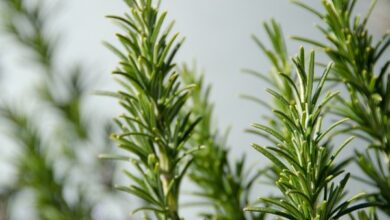How to Plant an Olive Tree Step by Step: [Complete Guide + Images]
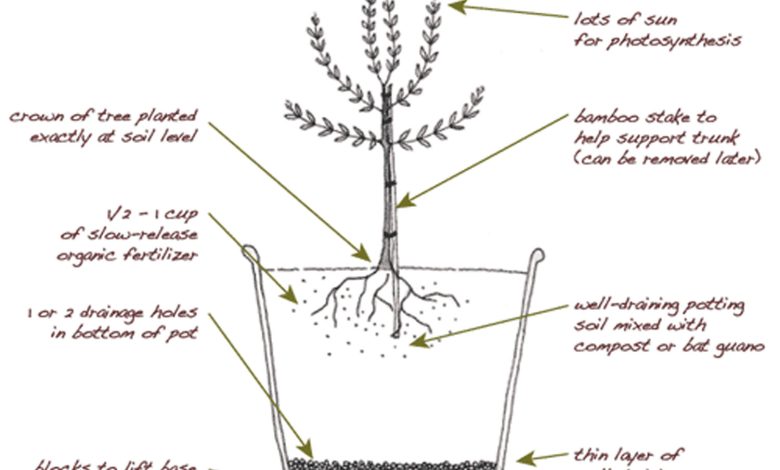
Important points when planting olive trees:
- When? In Autumn or Spring.

- Where? It requires between 8 and 12 hours a day of light. It develops very well in Mediterranean climates. They do not stand much cold weather and withstand high temperatures.
- Growing time? In 5 years it can reach a meter and a half and bear fruit. It will maximize production when it reaches 20-25 years of life. Although all this depends on the nutrients and the irrigation it has received.
- How do we prepare the land? It adapts very well to all types of soils, even rocky and sandy ones. It is also resistant to limestone soils and salinity, although they are not recommended.
- How do we water? Ideal drip irrigation. It does not require a lot of water, but we must avoid flooding.
- From seed? You can use olives picked directly from the tree or purchased from a garden store. Store-bought olives will not work because they have already been treated for consumption and the processes have probably killed the seed.
- When to do the transplant? Preferably, transplant in the fall. On a cool, windless day. When the seed has germinated and has been growing in the pot for several months.
- How is it harvested? The olive tree is an alternate species, which means that an abundant harvest precedes another with little flowering. This can be avoided or at least reduced if you read this article.
- Plagues and diseases? Olive spider, olive fly, wood caries, repilo.
The oliveo olive is an essential food in Mediterranean diets due to its high nutritional value, as well as its cultural and economic importance, since its fruitsolive oil is extracted.
Today, the olive tree is one of the most cultivated trees in the world. And although its cultivation is simple, there are certain essential requirements for its cultivation to be successful.
In this article we tell youwhat is the most effective way to plant it.
When should an olive tree be planted?
The best time to plant olive trees isin autumn or spring,when there is no risk of frost.
Where to plant an olive tree?
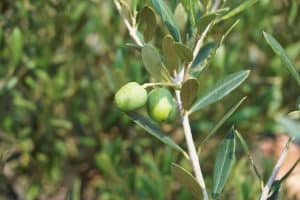 It develops very well in Mediterranean climates, where winters are not very cold and high temperatures are obtained in summer. So,it is poorly tolerant to cold.
It develops very well in Mediterranean climates, where winters are not very cold and high temperatures are obtained in summer. So,it is poorly tolerant to cold.
The lighting conditions must be total, so it is best to place it in an open field, away from any obstacle that could cause it to shade.They need between 8 and 12 hours of lightsun in the day.
Light deficiency reduces the formation of flowers or induces them to be non-viable.
Its optimum growth temperature varies between 18 and 22 ºC during flowering and fruit formation.
Does not tolerate temperatures below -10°C. Frosts, in fact, can cause damage to the development of the fruit.
It is important to care for it during flowering in dry winds and very high temperatures.
How often should olive trees be watered?
It is very resistant to drought and, in extreme cases, the production of male flowers is induced.
If you plant it indoors, it is recommended to maintain the relative humidity in the room, by means of humidifiers or frequent spraying of the leaves, so that the natural humidity that the tree loses by not being outside is imitated.
The soil should be watered when the top layers, the first 5 cm, feel moderately dry to the touch. Great care must be taken not to generate puddles.
How do we prepare the land?
It adapts very well to all types ofsoils, including rocky and sandy ones.
It is also resistant to limestone soils and salinity, although they are not recommended.
The soil, however, must be very fertile and deep to allow good root development and proper anchoring. In addition, a floor with a balanced proportion of coarse and fine elements is recommended to guarantee good aeration and facilitate the passage of water.
Drainage is essential, asthey do not tolerate waterlogging.
The olive tree requires a soil with a balancepH between 5.0 and 7.5
- To know more: How to pay an olive tree
How to plant olive tree step by step
collect the seed
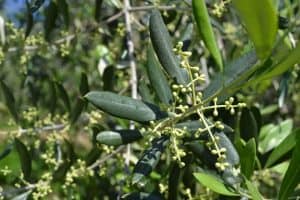 The best way to grow olive trees is to germinate the seed before sowing. You can use olives picked directly from the tree or purchased from a garden store.
The best way to grow olive trees is to germinate the seed before sowing. You can use olives picked directly from the tree or purchased from a garden store.
Olives bought in supermarket will not workbecause they have already been treated for consumption and the processes have probably killed the seed.
Gently tap the olives to loosen the pit that remains inside. Then place them in warm water and let them soak overnight, stirring the water every 3 hours, to help the fruit loosen more.
Those that float will not be viable. You can remove them from the bucket of water and throw them away.
prepare the seed
Take out those pits that are viable. You can use a sponge to remove excess shell. Finally, rinse them with lukewarm water.
Now make a slight cut on the rounded end of the pit. The cut should not be very deep, just a small hole about the size of the tip of a pen.
You must be careful not to break the seed, as it will be useless. Also, make sure it ‘s the round end of the seed, not the pointed end.
Sow the seeds in a pot
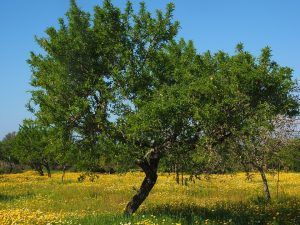 Geta pot of at least 15 centimetersyr Fill it with a good potting mix, making sure it has good drainage.
Geta pot of at least 15 centimetersyr Fill it with a good potting mix, making sure it has good drainage.
You can fill it with 1 part coarse sand and 1 part seed compost.
Add a little water so the soil mix is moist, but not muddy. It is not necessary to use fertilizer, although if you think it is necessary, you can use mulch to give the seeds more nutrients.
Put the seed in the ground, but do not bury it completely. Only 3/4 of the seed should remain underground.
Plant no more than one seed per pot.
Keep the soil moist and place the pot in a well-lit, warm spot, but avoid direct sunlight.
retains moisture
Place a plastic bag over the pot to help retain moisture.
Germination will occur after three weeks.Once you notice the first sprouts, remove the bag.
Try to water the pot every time you see that the surface layers dry out. Avoid puddles.
When the plant reaches more than 40 centimeters in height, it will be ready for transplanting.
Clear the ground
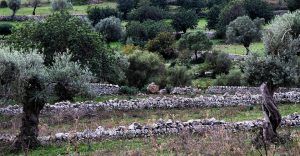 Extract weeds and remains of previous crops and all kinds of residues to ensure that your olive tree receives the right amount of nutrients.
Extract weeds and remains of previous crops and all kinds of residues to ensure that your olive tree receives the right amount of nutrients.
All plants must be pulled out by the roots to prevent them from growing back.
prepare the ground
Moisten the ground before planting the olive tree.
Fertilize the soil. Spread a 1-inch layer of compost on top of the soil.
transplant your shoots
Preferably, transplant in the fall. On a cool, windless day. If the ground is frozen, very wet or very dry,transplantation is not recommended.
Dig a hole big enough and deep enough for your tree’s root ball to grow snug and roots to develop. The measurement may vary depending on the size of your tree, but it should be at least twice the size of the root ball.
When planting, check that no roots are left outside the hole. Fill in the hole. Try that the neck of the root —where the stem begins— is not buried, but at ground level. Tamp down the soil to compact it and eliminate air pockets.
Keep in mind that it will take between 3 and 12 years for the trees to begin to bear fruit, so we recommend a lot of patience.
To know more, you can see: Olive cuttings.
Occasionally prune plants
Throughout the life cycle of the olive tree, we will remove the leaves in poor condition. Pruning also ensures that light reaches the center of the tree and the leaves have good ventilation.
Prune it from time to time, only if absolutely necessary. In this sense, olive trees do not grow quickly, so pruning may not be necessary.
Do not prune the trees during the first three years,as pruning can stunt the growth of young trees.
How to harvest olive
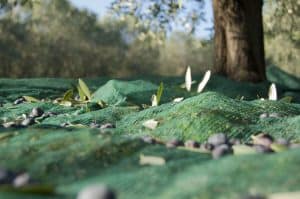 The olive tree is an alternate species, which means that an abundant harvest precedes another with little flowering.
The olive tree is an alternate species, which means that an abundant harvest precedes another with little flowering.
To avoid this, we can:
- Reduce the population of fruits by pruning the year before the one that is presumed to have a high production.
- Intense thinning of recently set fruit.
- Early harvest.
How long does it take to grow an olive tree?
The time is variable, and depends a lot on the particular conditions of the olive tree (nutrients, irrigation, soil, temperature, etc.).
However, we can establish as 5 years for it to bear the first fruits. After 20-25 years, the olive tree will maximize its production and will be fully adult.
Pests and diseases of the olive tree
For pests that affect olive trees, applying copper oxychloride can be an effective and ecological solution. Thoughit is convenient not to go overboardwith this fungicide because it is very toxic.
Some of the most common pests and diseases that affect the olive tree are:
Olive Spider (liothrips oleae)
It is controlled, when there are low populations, removing the individuals manually and crushing them.
For control of denser populations, neem oil can be applied, which is highly effective.
olive fruit fly (dacus oleae)
It is the insect that causes the most damage in olive groves.
The high summer temperatures, the reduced atmospheric activity, as well as the action of natural enemies, limit its development.
Neem oil can be applied, which is highly effective.
Repilo (cycloconium oleaginum)
The presence of the fungus on the leaf is recognized by a dark spot with a yellow halo. Diseased leaves fall, limiting the formation of flowers.
To prevent it, it is recommended to install a drip irrigation system and apply horsetail. As well as favoring the good ventilation of the plants.
wood decay
These fungi penetrate the trunk and branches through wounds, causing the bark to die.
For its control, applications with a brush of Bordelés Broth are recommended. Debarking can be done to increase the effectiveness of the treatment.
To learn more, you can see: Diseases of the olive tree.
verticillium wilt
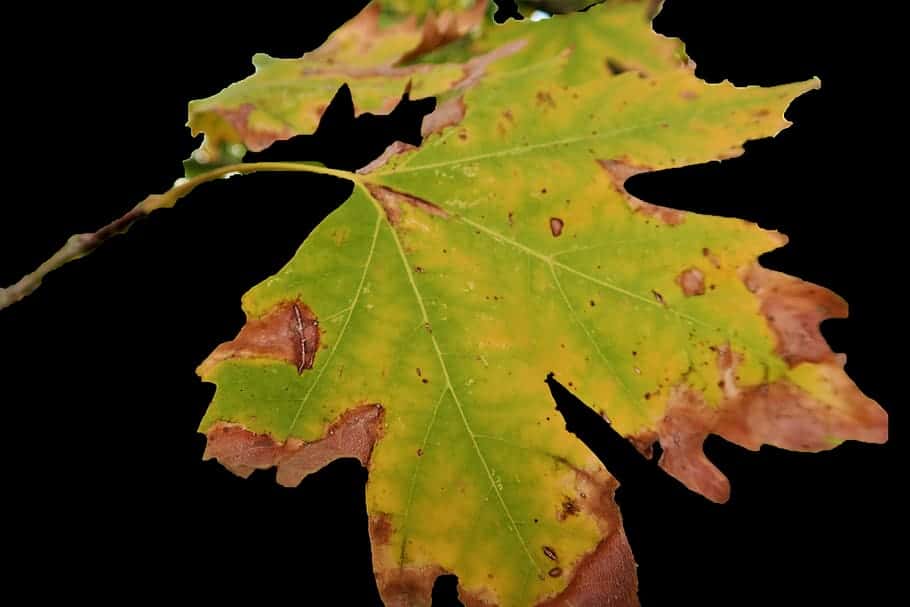 Verticillium or Verticillium wilt is a common soil fungus that thrives in temperate climates around the world and can be present in the soil for decades.
Verticillium or Verticillium wilt is a common soil fungus that thrives in temperate climates around the world and can be present in the soil for decades.
Verticillium wilt overwinters in the soil as dormant mycelium or tiny dormant black structures called microsclerotia, waiting for favorable conditions to return.
They enter damaged plant tissue through the roots and multiply. Many common weeds, such as dandelions and weeds, can be Verticillium host species.
Verticillium wilt is a disease that affects more than 350 species of eudicolous plants. It is caused by six species of Verticillium fungi: Verticillium dahliae, Verticillium albo-atrum, Verticillium longisporum, Verticillium nubilum, Verticillium theobromae, and Verticillium tricorpus.
Many plants with significant economic weight are susceptible, such as cotton, tomatoes, potatoes, oilseed rape, aubergines, peppers, and ornamental plants, as well as others in natural vegetation communities.
Many species and cultivars of eudicots are resistant to the disease, and all monocots, gymnosperms, and ferns are immune. To know more: Verticillium wilt in the Orchard: What is it? How do we identify it?
How long does an olive tree live?
The olive tree is a species of great longevity, so its life expectancy exceeds 1,500 years and it is even possible that it reaches 2,000 years.
How long does it take to produce fruit?
It all depends on the type of olive tree that is being used. Some varieties do it at 3 years, while others take up to 15 years.
Can it be grown in a pot?
It is possible to work it in a pot, but not indoors. This is because it is a species that requires a lot of sunlight on a daily basis.
How many times does an olive tree produce fruit?
It is only capable of generating a production of fruits per year, since it has a short flowering cycle.
Should an olive tree be pollinated to obtain fruit?
Its pollination system is very simple, since it uses the wind as a means of transport to carry the nectar.
How cold can an olive tree tolerate?
It is resistant to cold and, in fact, it needs it to complete its annual life cycle.
However, frost causes considerable damage to its structure, so it is better to have it protected from them.
How many olive trees can be planted per hectare?
The density of olive trees per hectare is very wide because it depends on the variety and the plantation framework to be used.
So you can have from 100 to 600 plants in the same hectare.
What type of fertilizer does an olive tree need?
The recommended fertilization process is annual and is based on providing an NPK fertilizer with an estimated formula of 11-15-15.
This fertilizer should be applied once or twice a year during the spring and summer months.
How much heat and/or drought can an olive tree tolerate?
It can tolerate high temperatures during the summer, as long as they are not above 37° C.
In such cases, the plant could suffer a lot and it will be necessary to help it with irrigation to avoid dehydration.
In any case, it does well with droughts, as long as they are not excessively prolonged.
Where can I buy this tree?
We always recommend going to a nursery in the town where you live. This way you can be advised by professionals.
In case you don’t have one, you can also buy an olive tree on Amazon:




Botanicly Indoor Plant – Olive Tree – Height: 89cm – Olea Europeae
- Plant height (including pot): 89 cm
- Delivery contains 1 natural plant
- Pot size Ø: 21 cm
- Where to locate the plant: Out of the sun
€35.95 View on Amazon Prices with VAT without transport
Last updated on 08-01-2022 / Affiliate Links / Affiliate API Images

![Photo of Bordeaux mixture: [Origin, Characteristics, Uses, Preparation and Application]](https://www.complete-gardening.com/wp-content/uploads/2021/06/Como-se-origina-el-caldo-bordeles-390x220.jpg)
![Photo of Potted Olive Tree Care: [Soil, Humidity, Pruning and Problems]](https://www.complete-gardening.com/wp-content/uploads/2022/08/potted-olive-tree-care-soil-humidity-pruning-and-problems-390x220.jpg)

